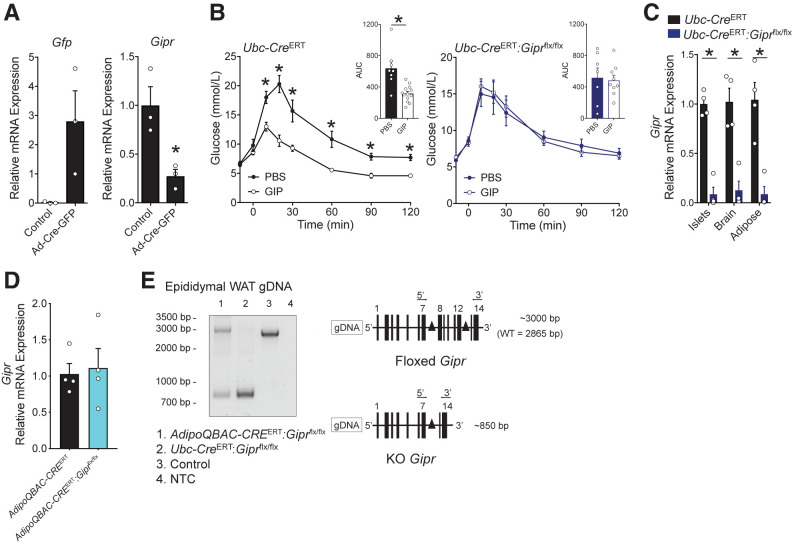Figure 2.
Complementary genetic strategies enable reduction of Gipr expression in adipose tissue. A) An adenoviral vector expressing Cre and Gfp under control of the CMV promoter was injected into an inguinal adipose depot of Giprflx/flx mice; empty vector was administered into the contralateral depot as a control. Quantitative PCR was used to determine the expression of Gfp and Gipr in both depots (n = 3 mice.) B) Blood glucose levels during an intraperitoneal glucose tolerance test in which PBS or GIP (4 nmol/kg) was administered 10 min before glucose in control (Ubc-CreERT2; n = 8–13) or Ubc-CreERT2:Giprflx/flx (n = 7–9) mice. C) Gipr expression in primary islets, whole-brain, and epididymal adipose tissue (n = 4). D) Gipr expression in epididymal adipose tissue from AdipoqBAC-CreERT (control) and AdipoqBAC-CreERT:Giprflx/flx mice harvested 2 weeks following tamoxifen treatment, when mice were 10 weeks of age (n = 4). E) PCR analysis of genomic DNA (gDNA) from epididymal WAT from different genetic mouse models. Nonrecombined DNA produces a 2,865 base pair (bp) product in wild-type (WT) mice, and ∼3,000 bp product in Giprflx/flx mice. Recombination of the loxP alleles produces an 850-bp product. For relative mRNA values, expression in panel A was normalized to control; for panel C, values were normalized relative to Ubc-CreERT; and for panel D, levels were normalized to Adipo-CreERT. *P < 0.05 vs control. AUC, area under the curve; KO, knockout; NTC, no template control.

